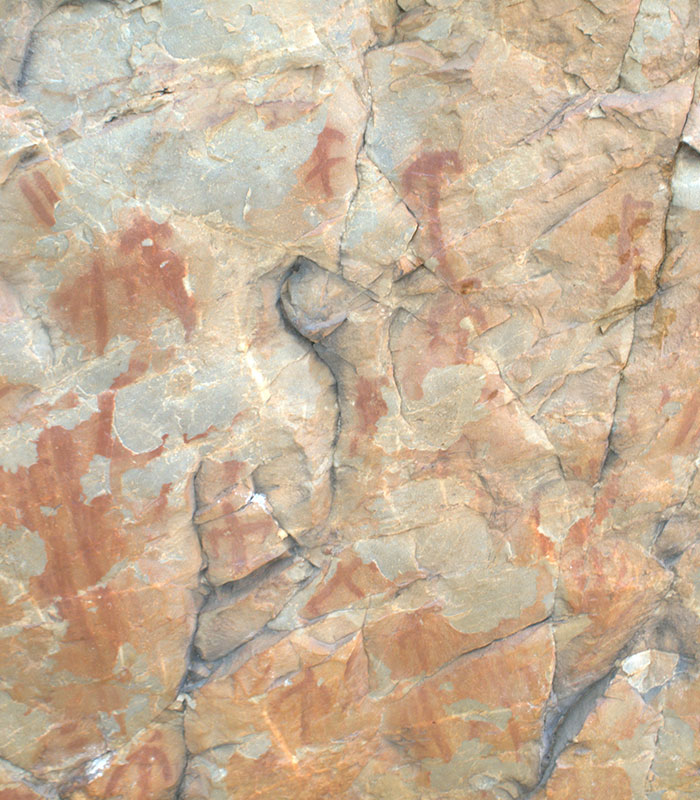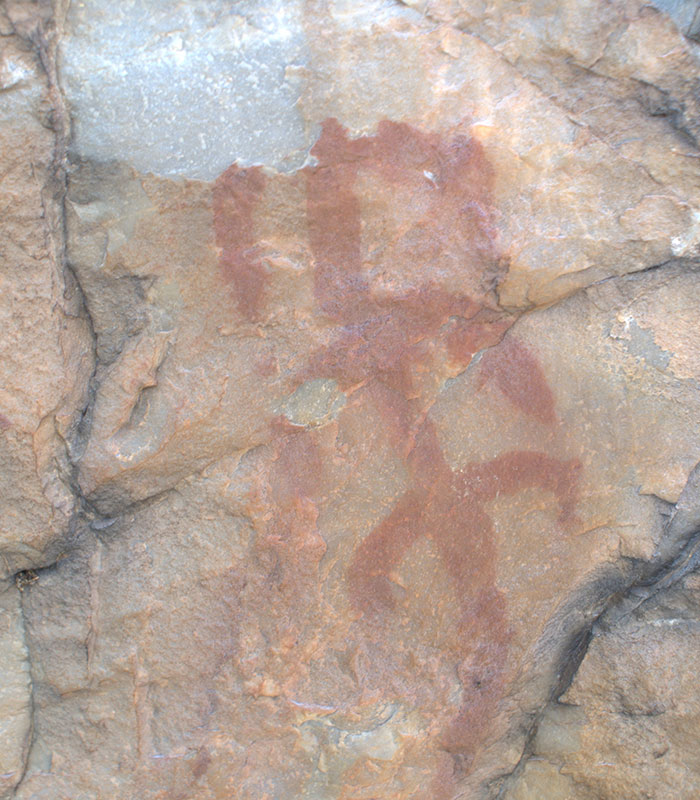The shelter which houses these paintings takes its name from its discoverer, Paulino Tejero Aparicio of Berzocana. It is surrounded by oak and chestnut woodland on a small promontory on the magnificent Canchos de las Sábanas from which an impressive landscape can be seen. On the quartzite, as witnesses of history since they were created several millennia ago, stand various groups of schematic figures representing people of different rank, animals, and unknown symbols. Among others one attracts our attention as it appears to suggest a human face.
The cave paintings of this shelter complement those already known from the same sierra such as those of the caves of Los Morales, Los Cabritos, and Los Caballos and in a wider sense those of the mountain ranges which form Las Villuercas.
This ensemble of paintings is to be found on one of the most southerly crags of the so-called Canchos de las Sábanas. Instead of being in a cave or shelter like other paintings, these are located on the surface of the rock which is inclined in such a way as to protect them from the elements. Owing to its wide field of vision and its domination of the valley, the site is clearly a strategic point for controlling and surveying the territory.
The paintings are reddish, dark crimson, and black in colour, and exceptionally white. They are in seven groups of human figures or anchor-shaped idols, cruciform figures, vertical strokes, stylised quadrupeds, etc.

